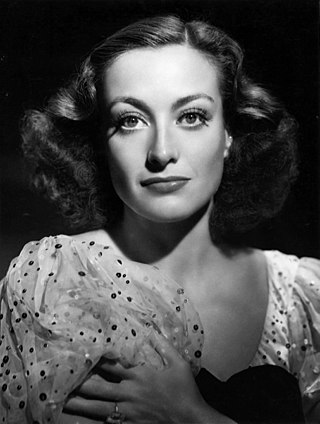
Joan Crawford was an American actress. She started her career as a dancer in traveling theatrical companies before debuting on Broadway. Crawford was signed to a motion picture contract by Metro-Goldwyn-Mayer in 1925. Initially frustrated by the size and quality of her parts, Crawford launched a publicity campaign and built an image as a nationally known flapper by the end of the 1920s. By the 1930s, Crawford's fame rivaled MGM colleagues Norma Shearer and Greta Garbo. Crawford often played hardworking young women who find romance and financial success. These "rags-to-riches" stories were well received by Depression-era audiences and were popular with women. Crawford became one of Hollywood's most prominent movie stars and one of the highest paid women in the United States, but her films began losing money. By the end of the 1930s, she was labeled "box office poison".
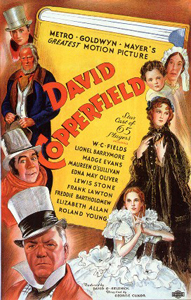
David Copperfield is a 1935 American film released by Metro-Goldwyn-Mayer based upon Charles Dickens' 1850 novel The Personal History, Adventures, Experience, & Observation of David Copperfield the Younger.
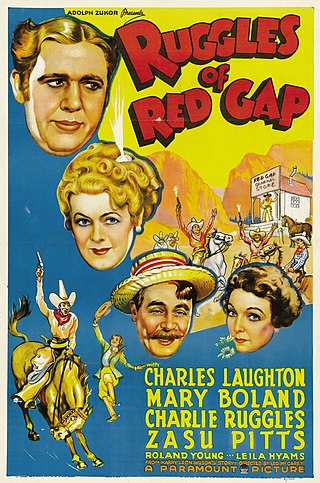
Ruggles of Red Gap is a 1935 American comedy film directed by Leo McCarey and starring Charles Laughton, Mary Boland, Charlie Ruggles, and ZaSu Pitts and featuring Roland Young and Leila Hyams. It was based on the best-selling 1915 novel by Harry Leon Wilson, adapted by Humphrey Pearson, with a screenplay by Walter DeLeon and Harlan Thompson. It is the story of a newly rich American couple from the West who win a British gentleman's gentleman in a poker game.
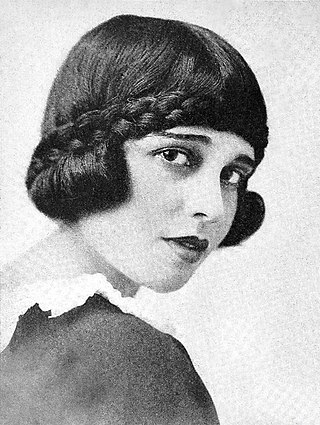
Corinne Anita Loos was an American actress, novelist, playwright and screenwriter. In 1912, she became the first female staff screenwriter in Hollywood, when D. W. Griffith put her on the payroll at Triangle Film Corporation. She is best known for her 1925 comic novel, Gentlemen Prefer Blondes, and her 1951 Broadway adaptation of Colette's novella Gigi.

Charles Sherman Ruggles was an American comic character actor. In a career spanning six decades, Ruggles appeared in close to 100 feature films, often in mild-mannered and comic roles. He was also the elder brother of director, producer, and silent film actor Wesley Ruggles (1889–1972).
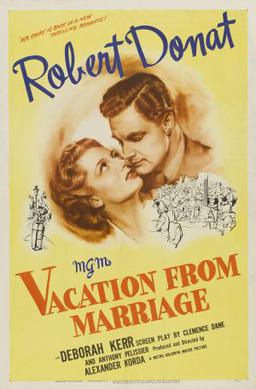
Perfect Strangers, is a 1945 British drama film made by London Films. It stars Robert Donat and Deborah Kerr as a married couple whose relationship is shaken by their service in the Second World War. The supporting cast includes Glynis Johns, Ann Todd and Roland Culver. It was produced and directed by Alexander Korda from a screenplay by Clemence Dane and Anthony Pelissier based on a story by Clemence Dane. Dane won the Academy Award for Best Story. The music score was by Clifton Parker and the cinematography by Georges Périnal.

A Face in the Crowd is a 1957 American satirical drama film directed by Elia Kazan and starring Andy Griffith, Patricia Neal and Walter Matthau. The screenplay is by Budd Schulberg and is based on his short story "Your Arkansas Traveler", from the 1953 collection Some Faces in the Crowd.
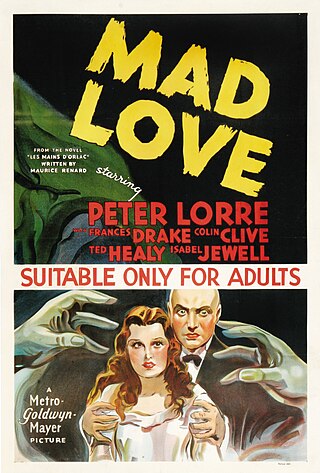
Mad Love is a 1935 American body horror film, an adaptation of Maurice Renard's novel The Hands of Orlac. It was directed by German-émigré film maker Karl Freund, and stars Peter Lorre as Dr. Gogol, Frances Drake as Yvonne Orlac and Colin Clive as Stephen Orlac. The plot revolves around Doctor Gogol's obsession with actress Yvonne Orlac. When Stephen Orlac's hands are destroyed in a train accident, Yvonne brings him to Gogol, who claims to be able to repair them. As Gogol becomes obsessed to the point that he will do anything to have Yvonne, Stephen finds that his new hands have made him into an expert knife thrower.
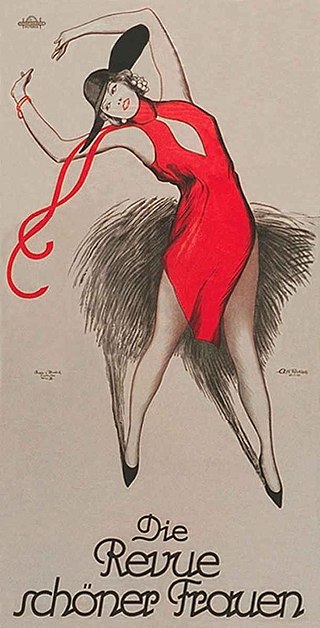
Pretty Ladies is a 1925 American silent comedy drama film starring ZaSu Pitts and released by Metro-Goldwyn-Mayer. The film is a fictional recreation of the famed Ziegfeld Follies. Directed by Monta Bell, the film was written by Alice D. G. Miller and featured intertitles by Joseph Farnham. Pretty Ladies originally featured musical color sequences, some in two-color Technicolor. However, the color sequences are now considered lost.

Dance, Fools, Dance is a 1931 pre-Code Metro-Goldwyn-Mayer drama film starring Joan Crawford, Clark Gable, and Lester Vail in a story about a reporter investigating the murder of a colleague. Story and dialogue were created by Aurania Rouverol, and the film was directed by Harry Beaumont. Dance, Fools, Dance was the first of eight movies featuring Crawford and Gable.
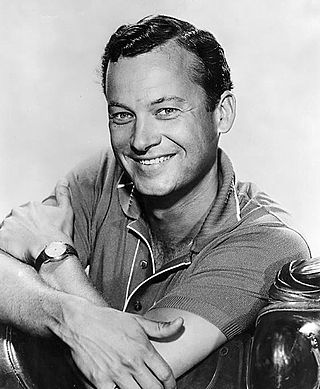
Mark Miller was an American stage and television actor and writer who starred in over 30 plays and made more than forty appearances in television programs and films since 1953. He is best known for his roles as Bill Hooten in Guestward, Ho!, as Jim Nash in the Please Don't Eat the Daisies TV series and as Alvie in the movie he wrote and produced, Savannah Smiles.

Evergreen is a 1934 British musical film directed by Victor Saville starring Jessie Matthews, Sonnie Hale and Barry MacKay. The film is based on the 1930 musical Ever Green, also starring Matthews, who plays a dual role as mother and daughter.
Public Hero ﹟1 is a 1935 American crime film starring Lionel Barrymore, Jean Arthur, Chester Morris and Joseph Calleia. The Metro-Goldwyn-Mayer production was directed by J. Walter Ruben.
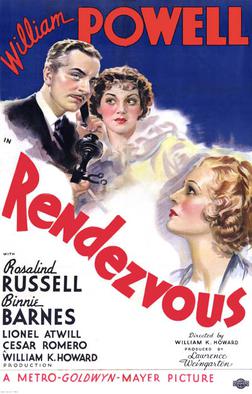
Rendezvous is a 1935 American spy film set in World War I, directed by William K. Howard, starring William Powell and Rosalind Russell and featuring Binnie Barnes, Lionel Atwill, Cesar Romero and Samuel S. Hinds. Powell plays an American cryptologist who tangles with German spies while falling in love.
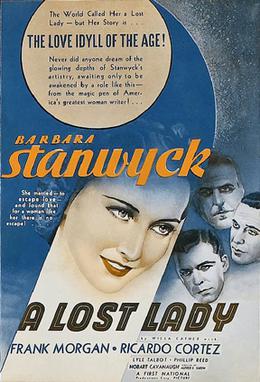
A Lost Lady is a 1934 American drama film directed by Alfred E. Green and starring Barbara Stanwyck, Frank Morgan, and Ricardo Cortez. Based on the 1923 novel A Lost Lady by Willa Cather, with a screenplay by Gene Markey and Kathryn Scola, the film is about a woman whose fiancé is murdered by his mistress' husband two days before their wedding. Her uncle sends her away to the mountains, where she meets a man who looks after her and eventually proposes. She accepts even though she does not love him.

The Women is a 1939 American comedy-drama film directed by George Cukor. The film is based on Clare Boothe Luce's 1936 play of the same name, and was adapted for the screen by Anita Loos and Jane Murfin, who had to make the film acceptable for the Production Code for it to be released.

Star of Midnight is a 1935 American mystery comedy film directed by Stephen Roberts. William Powell was loaned to RKO Pictures from MGM to star with Ginger Rogers.
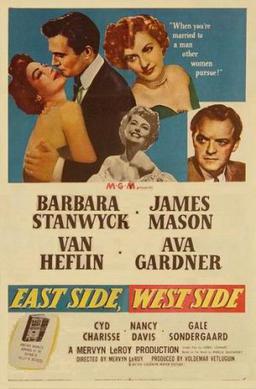
East Side, West Side is a 1949 American melodrama crime film, starring Barbara Stanwyck, James Mason, Van Heflin, and Ava Gardner. Based on the 1947 novel of the same title, written by Marcia Davenport, screenplay by Isobel Lennart, produced by Voldemar Vetluguin, directed by Mervyn LeRoy, and distributed by Metro-Goldwyn-Mayer.
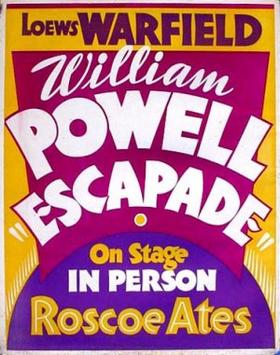
Escapade is a 1935 romantic comedy film starring William Powell and Luise Rainer. It is a remake of Maskerade (1934).

Accent on Youth is a 1935 American comedy film directed by Wesley Ruggles and written by Herbert Fields and Claude Binyon based on the 1934 play of the same name written by Samson Raphaelson. The film stars Sylvia Sidney and Herbert Marshall and features Phillip Reed, Holmes Herbert, Catherine Doucet, Astrid Allwyn and Lon Chaney Jr. The film was released on August 23, 1935, by Paramount Pictures.



















